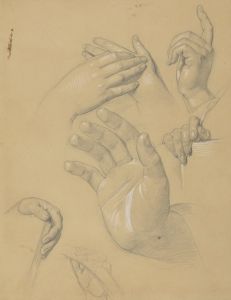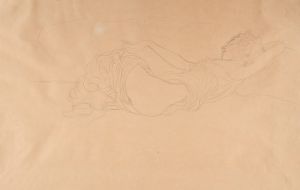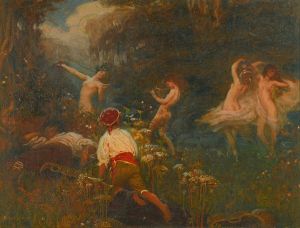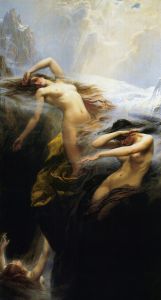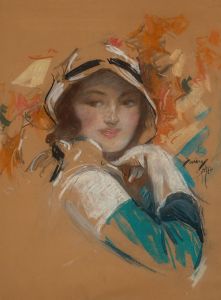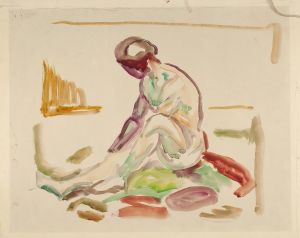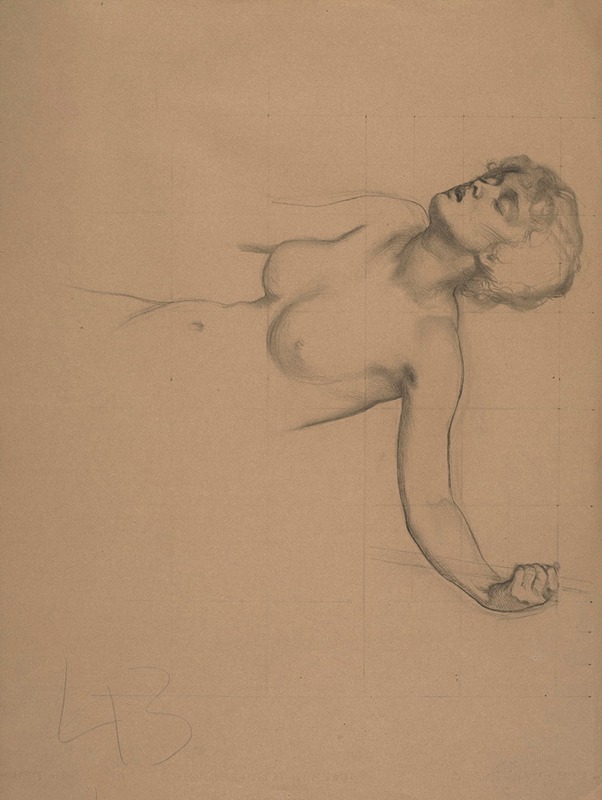
A nude study of a woman
A hand-painted replica of Herbert James Draper’s masterpiece A nude study of a woman, meticulously crafted by professional artists to capture the true essence of the original. Each piece is created with museum-quality canvas and rare mineral pigments, carefully painted by experienced artists with delicate brushstrokes and rich, layered colors to perfectly recreate the texture of the original artwork. Unlike machine-printed reproductions, this hand-painted version brings the painting to life, infused with the artist’s emotions and skill in every stroke. Whether for personal collection or home decoration, it instantly elevates the artistic atmosphere of any space.
Herbert James Draper (1863–1920) was a British painter of the late Victorian and Edwardian periods, known for his mythological and allegorical works, often featuring the human figure in classical settings. Among his lesser-known works is A Nude Study of a Woman, a painting that exemplifies Draper's skill in rendering the human form with sensitivity and technical precision.
This artwork is a study, meaning it was likely created as part of Draper's preparatory process for a larger composition or as an exercise in mastering the depiction of the nude figure. The painting portrays a female subject in a naturalistic pose, emphasizing the artist's focus on anatomy, light, and texture. Draper, like many artists of his time, was influenced by the academic tradition, which placed great importance on life drawing and the study of the nude as a foundation for artistic practice.
The exact date of the painting is not documented, but it is consistent with Draper's broader body of work, which often explored themes of beauty, mythology, and the human form. Draper studied at the Royal Academy of Arts in London, where he would have received rigorous training in classical techniques, including the study of live models. This background is evident in the meticulous attention to detail and the harmonious composition of A Nude Study of a Woman.
While Draper achieved significant recognition during his lifetime for his large-scale mythological paintings, such as The Lament for Icarus (1898), his studies and smaller works provide valuable insight into his artistic process. These pieces reveal his dedication to understanding the subtleties of the human body and his ability to convey emotion and realism through his brushwork.
The painting is executed in oil, a medium Draper frequently used, allowing for the rich blending of colors and the creation of lifelike textures. The subdued palette and soft lighting in this study suggest an intimate and contemplative atmosphere, aligning with the academic tradition of focusing on the purity of form without the distraction of elaborate backgrounds or narratives.
Currently, there is limited information available about the provenance or current location of A Nude Study of a Woman. It is not among Draper's most widely exhibited or reproduced works, and it may reside in a private collection or remain part of an archive of studies and sketches. Despite its relative obscurity, the painting stands as a testament to Draper's technical skill and his commitment to the artistic ideals of his era.
This study contributes to the broader understanding of Draper's oeuvre and the artistic practices of the late 19th and early 20th centuries, reflecting the enduring importance of the human figure in Western art.





